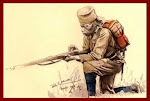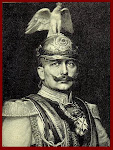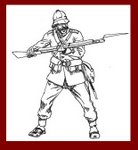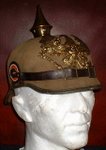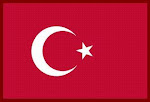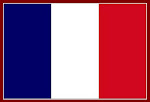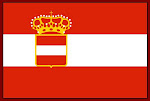Megablitz and more: Somme enchanted evening: A couple of weeks after the Somme game reported here earlier I ran a cut-down version at the Sheffield club. Why cut-down? Two reasons:...
Friday, August 26, 2016
Monday, August 22, 2016
Megablitz and more: Somme day I'll find you - part 5 (the last)
Megablitz and more: Somme day I'll find you - part 5 (the last): We left the action as the troops went 'Over the Top', confident of an artillery-wrought victory. Sadly as the Tommies approached ...
Megablitz and more: Somme day I'll find you - part 4
Megablitz and more: Somme day I'll find you - part 4: During a final short, sharp bombardment, the troops assembled to go 'over the top'. Two brigades were deployed, each of four b...
Megablitz and more: Somme day I'll find you - part 3
Megablitz and more: Somme day I'll find you - part 3: For the second air phase the RFC decided on a single recce 'plane with a heavy fighter escort. One of the fighters was French ...
Megablitz and more: Somme day I'll find you - part 2
Megablitz and more: Somme day I'll find you - part 2: Or as our comrade in blogs Conrad Kinch would have it - 'The Puns of August.' Phase to of the game saw the massive British artill...
Megablitz and more: Somme day I'll find you - part 1
Megablitz and more: Somme day I'll find you - part 1: Recently I took part in a game based on the Battle of the Somme organised by Funny Little Wars author Mr PW. It took place in a garden som...
Sunday, August 21, 2016
Monitor Tank : All Quiet On The Martian Front
"All Quiet On The Martian Front" American Monitor Tank and Armored Infantry.
I've been wanting one of these got lucky on Ebay...)
Thursday, August 18, 2016
Shon's Game Corner: Lovecraft's Revenge - taking THW to new levels of ...
Shon's Game Corner: Lovecraft's Revenge - taking THW to new levels of ...: The time for terror has arrived! Lovecraft's Revenge is the newest game from Two Hour Wargames that takes you through the mind ...
Tuesday, August 16, 2016
Friday, August 12, 2016
Thursday, August 11, 2016
World War I French Aircraft
Listing of all aircraft deployed by the nation of France during World War 1 with history text, performance specifications and photograph images.
Sunday, August 7, 2016
Saturday, August 6, 2016
World War 1 Italian Military Aircraft (1914-1918)
While joining the Allies only later in the conflict, the Italian commitment against the Central Powers should not be overlooked.
Thursday, August 4, 2016
Sopwith Snipe
The Sopwith 7F.1 Snipe was a British single-seat biplane fighter of the Royal Air Force. It was designed and built by the Sopwith Aviation Company during the First World War, and came into squadron ...
Top speed: 121 mph
Wingspan: 31′ 0″
Length: 19.85′
Weight: 1,314 lbs
Engine type: Rotary engine
First flight: October 1917
Manufacturer: Sopwith Aviation Company
Bristol F. 2B Fighter
Top speed: 123 mph
Wingspan: 39′ 0″
Length: 25.82′
Retired: 1930
Unit cost: 1,350–1,350 GBP (1918)
First flight: September 9, 1916
Manufacturers: Standard Motor Company, Bristol Aeroplane Company
Tuesday, August 2, 2016
Airco DH.4
The Airco DH.4 was a British two-seater biplane of the First World War. It was the first British two seat light day-bomber to have an effective defensive armament. The DH.4 proved a huge success and was often considered the best single-engine bomber of the War. It was flown by a number of famous British and American aces, such as Frederick Cotton and Charles Bartlett.
Macchi M.5
The Macchi M.5 was an Italian single-seat fighter flying boat, designed and built by Nieuport-Macchi at Varese. It was extremely maneuverable and agile and matched the land-based aircraft it had to fight.
The M.5 was operated by five Italian maritime patrol squadrons as a fighter and convoy escort. By the end of World War I, these aircraft were flown by both United States Navy and United States Marine Corps airmen. The three versions of the airplane proposed include the model flown by the Italian ace Domenico Arcidiacono, an American plane flown by Willis B. Haviland and a captured Austrian plane piloted by Friedrich Welker.
The M.5 was operated by five Italian maritime patrol squadrons as a fighter and convoy escort. By the end of World War I, these aircraft were flown by both United States Navy and United States Marine Corps airmen. The three versions of the airplane proposed include the model flown by the Italian ace Domenico Arcidiacono, an American plane flown by Willis B. Haviland and a captured Austrian plane piloted by Friedrich Welker.
Monday, August 1, 2016
Sopwith Triplane
The Sopwith Triplane was a British single seat fighter aircraft designed and manufactured by the Sopwith Aviation Company during the First World War. It was the first military triplane to see operational service. The Triplane joined Royal Naval Air Service squadrons in early 1917 and was immediately successful. It was nevertheless built in comparatively small numbers and was withdrawn from active service as Sopwith Camels arrived in the latter half of 1917. Surviving Triplanes continued to serve as operational trainers until the end of the war.
Sopwith Camel (Elwood)
The Sopwith Camel was a British First World War single-seat biplane fighter aircraft introduced on the Western Front in 1917. Manufactured by the Sopwith Aviation Company, it used a rotary engine, and had twin synchronized machine guns. Though difficult to handle it offered very good maneuverability to an experienced pilot. Camel pilots were credited with shooting down 1,294 enemy aircraft, more than any other Allied fighter of the conflict. It also served as a ground-attack aircraft, especially towards the end of the war when it had become outclassed in the air-to-air role. The main variant was the F.1 but dedicated variants were built for a variety of roles including the 2F.1 Ship's Camel for carrier operations, the Comic night fighter, the T.F.1 trench fighter armored ground attack aircraft and as a two-seat trainer.
Subscribe to:
Posts (Atom)


